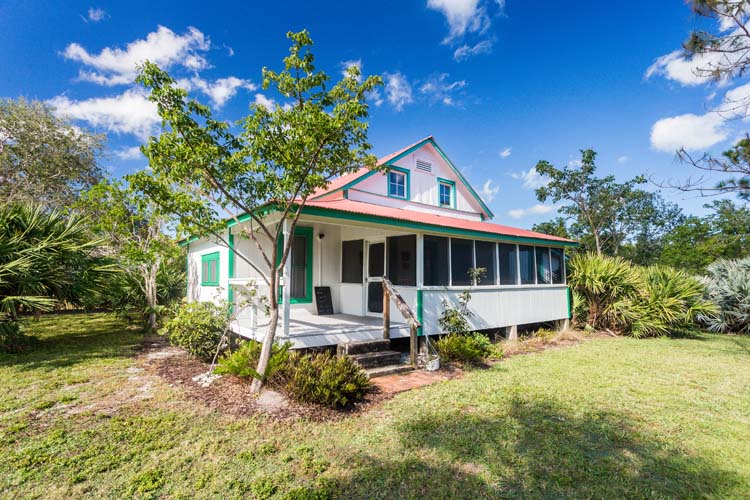
It is not clear what the future holds for the Laura Riding Jackson House, which has been located on the Environmental Learning Center campus for the past 24 years.
Marie Stiefel, head of the foundation that oversees the house, said foundation board members met with ELC’s new leadership over lunch last summer to discuss the environmental center’s ambitious multimillion-dollar expansion plans and were told those plans don’t include the 118-year-old house.
Stiefel said no specific timeframe was provided for when the structure would have to be moved, leaving the board uncertain about how best to proceed. After the meeting, several board members expressed disappointment that the genial 25-year partnership between the house foundation and ELC would be coming to an end.
Some noted the irony that a sustainable structure built out of materials from its surroundings and designed to make best use of wind, rain and the natural light is not seen as relevant to an organization promoting harmony between people and the natural world.
Built in 1910 among the citrus groves west of the railroad tracks in Wabasso, the small frame house was purchased in 1940 by notable poet, essayist, anthologist and publisher Laura Jackson, who was associated with many leading literary figures of the 20th century, and her husband, Time Magazine poetry critic Schuyler Jackson. The couple raised citrus organically and shipped it to northern markets to support their work. The house is one of the few local examples of true Florida Cracker architecture still standing in the county.
The structure was moved to its current location, an acre leased from the ELC for $2,100 a year, renewable every five years, in 1994. While on the campus it has been open for tours and used for writing workshops and poetry festivals. The current lease expires in December.
When contacted by Vero Beach 32963, ELC leaders were ambiguous about whether or when the house would have to be moved. ELC Director of Marketing Communications Nance Hatch wrote in an email: “There is no plan in the immediate future for the Laura Riding Jackson house to move off the ELC campus. We are developing a campus master plan to transform the campus to better serve a broader range of community needs for the next 10 years and beyond.”
In a second email, Hatch wrote: “We admire the work the Laura Jackson Riding Foundation has done and look forward to the evolution and continuation of a relationship that’s existed for almost as long as the ELC has been open.”
Both emails sound hopeful but are less than crystal clear. Saying no current plans exist to move the house is not the same as saying it will not have to be moved, and “continuation of a relationship” could mean a number of things.
In the face of uncertainty, the house foundation is seeking other possible locations for the historically significant home, which in May was listed by the Florida Trust for Historic Preservation as among “the most threatened historic properties in the state.”
Foundation Board member and Indian River County’s first poet laureate Sean Sexton said board members have had preliminary conversations with Indian River State College about the possibility of moving the house, which is loaded with literary associations, to the college’s Indian River County campus.
Foundation Board Secretary Rene VanDeVoorde, Jackson’s longtime friend and personal attorney, said that partnering with the college is an exciting possibility, and adds that the board has also had conversations with other local historical landmark entities about the possibility of establishing a partnership.
As it stands now, there seem to be three main possibilities for the house: It could remain where it is for another 5-year lease cycle, while the ELC project moves though the fundraising and pre-construction phases; it could be relocated on the ELC campus; or it could be moved to another location, such as the Indian River State College campus.
House foundation board members say moving the house would be a delicate, time-consuming process that would cost at least $100,000.



